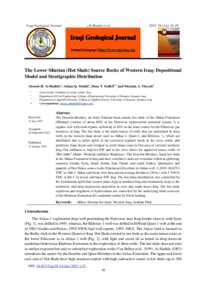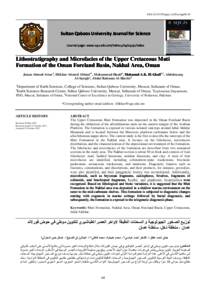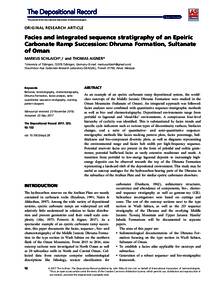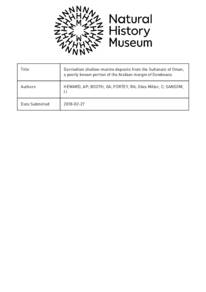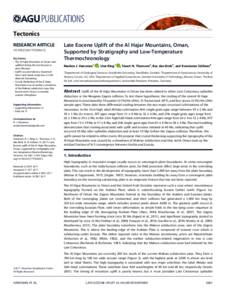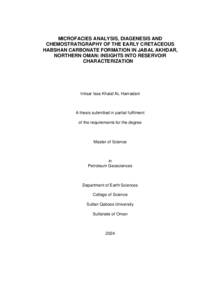Document
The lower silurian (hot shale) source rocks of western Iraq : depositional model and stratigraphic distribution.
Identifier
DOI: 10.46717/igj.56.1A.3ms-2023-1-15
Source
Iraqi Geological Journal. v. 56, 1, p. 18-28
Contributors
Country
Iraq
City
Baghdad
Publisher
Union of Iraqi Geologists.
Gregorian
2023-01-31
Language
English
Subject
English abstract
The Hoseiba Member, an Early Silurian basal mature hot shale of the Akkas Formation (Silurian) consists of about 80% of the Paleozoic hydrocarbon potential system, it is organic-rich with total organic carbon up to 16% as the main source for the Paleozoic gas resources in Iraq. The hot shale is the main source of rocks that are penetrated in deep wells in the western Iraqi desert such as Akkas-1, Qaim-1, and Khleisia-1, which are distributed due to paleo uplift in the restricted regional basin in the west, south, and northwest Iraqi desert and wedged to north thrust zone in Ora area of extreme northern Iraq, Ora subbasin to Aljezira NW and in the west where the approved source rocks of ‘Hot shale” Akkas-Widyian subbasin (Rephrase). The Hoseiba Member, basal hot shale in the Akkas Formation in Iraq and their correlative units are extended within neighboring countries Jordan, Syria, Saudi Arabia, Iran, Oman, and south Turkey. Qualitative and quantity of Hot Shales source rocks Silurian are Excellent in Akkas well-1 (0.95-16.62%) TOC in Akk-1 Akkas sub-basin west Iraq and an average thickness (30 m.) with 1-9.94% TOC in Kh-1 Al-Jezira sub-basin NW Iraq. The hot shale distribution was controlled by the Caledonian uplift that created paleo-high in northern Iraq and moderately deep to the northwest, and deep depression deposition in west and south desert Iraq. The hot shale expulsion and migration of hydrocarbon are controlled by the underlying main reservoir of the Khabour Formation K1 sandstone ember by block faulting.
ISSN
2414-6064
Category
Journal articles

